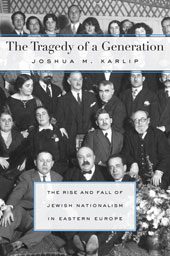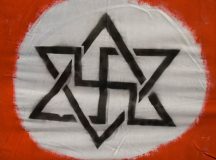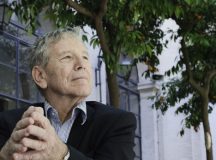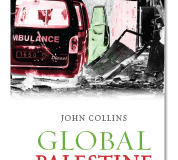The Tragedy of a Generation, states the book’s dust jacket, is ‘the story of the rise and fall of an ideal: an autonomous Jewish nation in Europe.’ The book traces two influential strains of Jewish thought – Yiddishism and Diaspora Nationalism – over the first four decades of the 20th century. Joshua Karlip, an assistant professor of Jewish history at Yeshiva University in New York, deftly weaves the personal biographies of three figures – Yisroel Efroikin, Zelig Hirsh Kalmanovitch, and Elias Tcherikower, who came from Lithuania, Latvia and Ukraine, respectively – into a larger historical narrative.
Karlip, unlike earlier historians who have viewed theHaskalah and the development of secular Jewish nationalism in Eastern Europe as a break with Orthodox Judaism, demonstrates that this was not always the case. Through an analysis of the writings of these three activists and ideologues, he provides evidence that they remained immersed in the values of traditional Judaism and the concept of klal yisroel, though two of them had been socialists in pre-1917 Russia. Diaspora nationalists and Yiddishists, asserts Karlip, ‘constantly sought both to rebel against the religious tradition and to draw inspiration from it.’ After all, they, like the observant, wanted to stem the tide of cultural and political assimilation.
Prior to the First World War the original theorists of Diaspora nationalism had already inspired a number of political parties in the Tsarist Empire (and to a lesser extent in the Habsburg Empire). The historian Shimen Dubnov had founded the Folkspartey, which advocated a multi-ethnic Russian state with a political space for Jewish autonomy. Chaim Zhitlovsky, a socialist as well as a Yiddishist and nationalist, created the Marxist-oriented Jewish Socialist Workers’ Party (SERP), which blended a synthesis of socialism and Jewish nationalism. Its members, known as Seymists, sought a separate seym, or parliament, for Russian Jewry. Most influential of all was the Jewish Labour Bund; it would become the main political rival to the various Zionist movements in pre-1917 Russia and later in the new Polish state created at Versailles. Its slogan, ‘do-ikayt’ (‘here-ness’), asked Jews to fight for their rights in the countries where they lived, rather than seeking a Jewish renewal in Palestine.
To serve this end, all these groups championed Yiddish, the mother tongue of most Jews in Eastern Europe, as the unifying force binding Jews to their national identity. The language would be the vehicle, taught in schools, applied in cultural and political institutions and used to create an autonomous Jewish entity. The 1908 Czernowitz Conference, held in what was then the capital of the Habsburg province of Bucovina, declared Yiddish ‘a national language of the Jewish people,’ and was a milestone in this process. Elevating the language of the ‘street’ to a position equal, or even superior, to that of Hebrew ‘itself was a radical, revolutionary act,’ notes Karlip.
Tcherikover, the most ‘Russified’ of the three men, was for a time deeply involved in non-Jewish politics as a member of the Menshevik wing of the Russian Social Democratic Labour Party. He castigated the Bundists for being ‘kings without a people,’ Kalmanovitch joined the SERP but soon moved on to become a Yiddishist, engaged in cultural work. Efroikin, following the 1905 Russian revolution, also became a Seymist, emphasising ‘class struggle,’ and active in mobilising Jewish workers.
However, the SERP found itself under attack from different directions. Relations with parties representing other oppressed peoples were difficult: For instance, the Polish Socialist Party (PPS) argued against the policy of extra-territorial autonomy for Jews on the grounds that it would lead to a division between Poles and Jews in any reconstituted Polish state. The Bund, meanwhile, tried to block the SERP’s efforts on the grounds that they were recruiting petite bourgeois members. This was, in fact, true because Efroikin had indeed come to see socialism as a possibility for Jews only if it became a people’s movement, one appealing not just to the proletariat but to all the poor. In 1911, he abandoned socialism altogether and joined forces with Dubnov’s folkist autonomists.
The First World War brought unprecedented upheaval and destruction to Russian Jewry; many living in the war zones were uprooted, and tens of thousands died in pogroms. But the March 1917 overthrow of the Tsar brought expressions of euphoria from Diaspora nationalists, who ‘believed that the era of redemption had dawned.’ Efroikin and Tcherikower announced their loyalty to the new democratic government in Petrograd. The Folkspartey advanced a political programme in which the traditional kehiles (in Russian, obshchiny, local Jewish communities and the union of those communities) would be democratised and assume the functions of autonomous governments – and operating in Yiddish. The Bund, however, opposed the plan, considering itself the representative of only the Jewish working class.
In any event, the November 1917 takeover by the Bolsheviks changed everything. The formation of the Soviet Union shattered the unity of the Jews in the old Russian ‘Pale of Settlement’, as the Jewish communities in the new states of Latvia, Lithuania and Poland (as well as some who now found themselves in a newly enlarged Romania) were separated from those in Belarus, Russia and Ukraine. Within the Soviet Union itself, Yiddish and Yiddish culture would now serve the political purposes of Communism. Kalmanovitch, unable to stomach life in the USSR – he even despised the phoneticised Soviet Yiddish orthography, which removed all Hebrew spellings – left the country in 1921.
Diaspora nationalists suffered further blows when the successor states formed after the war failed to provide rights to their national minorities, despite promises to do so. Kalmanovitch moved to Lithuania, while Tcherikover and Efroikin settled in Berlin and Paris, respectively. The latter two continued to work as Diaspora nationalists within the World Jewish Congress movement. Kalmanovitch, on the other hand, became a territorialist and joined the Freeland League, formed in 1935, which worked on gaining a territory for European Jews somewhere other than Palestine as the threat from Hitler increased. His hatred of Soviet Russia knew no bounds, and he now despised Zhitlovsky, who had become ‘the Red Oppressor’s servant’ and ‘a false messiah.’ Tcherikower, too, denounced the Soviet Union and its ‘denationalized’ Yiddish culture.
By 1939, in a Europe dominated by anti-Semitism, fascism and Nazism, ideologies that had reversed the liberal emancipations of the 19th century, these proponents of Diaspora nationalism and Yiddishism now urged retreat into a strengthened Jewish identity. In their new journal Oyfn Sheydveg, the three turned to a pre-modern ‘usable past’; Kalmanovitch and Tcherikower repudiated Dubnov’s continued faith in democracy. Modernity had proved a false hope for Jews and in this period there was no alternative but cultural isolation in a Yiddish-based ‘festung Judaica.’ Of course they could not have foreseen, even at this late date, the genocide that would physically destroy the millions of Jews whose dire circumstances they were addressing.
When the Nazis overran Eastern Europe Kalmanovitch was trapped in the Vilna ghetto (where he returned to traditional Judaism) and perished in the Holocaust in 1944, while Efroikin and Tcherikower managed to escape Europe via Vichy France, the former to Montevideo, Uruguay, the latter to New York, where he died in 1943. While Kalmanovitch remained resolutely anti-Communist even in the Vilna ghetto, Efroikin, disillusioned with the Western liberal democracies due to their indifference to Hitler’s slaughter of European Jewry, became more favourably disposed to Stalin’s Russia; by 1944, like many other Jews at the time, he ‘looked to the Soviet Union for salvation’ and asserted that, with the establishment of the Jewish Autonomous Region in Birobidzhan, Jewish national autonomy had scored its greatest success in the USSR. Yet by the time he died ten years later in Paris, he had become a Zionist and active supporter of the State of Israel.
The story of the Yiddishist and Diaspora nationalist movements ended badly, as we know, and Karlip touches upon the irony that the Diaspora nationalists advocated in their ideology in the name of realism, viewing the Zionist project, including the revival of Hebrew as a modern language, as hopelessly utopian. In the end the opposite proved true.
Meticulously researched and thoroughly documented, Karlip’s invaluable book will be of great interest to all who care about East European Jewish history and who might still wonder – were it not for Hitler, Stalin, and their numerous accomplices – ‘what might have been.’





































